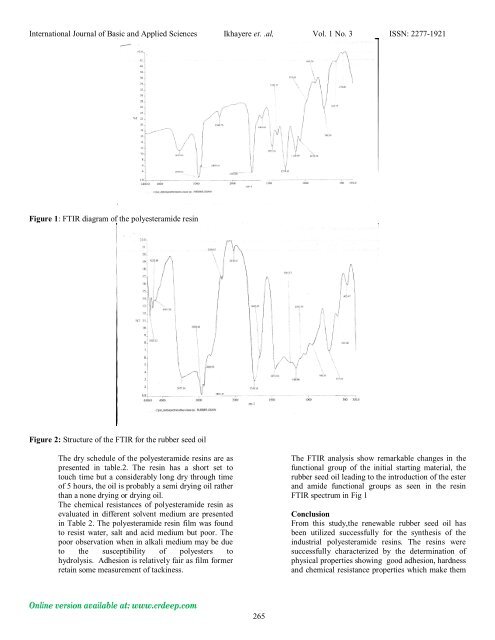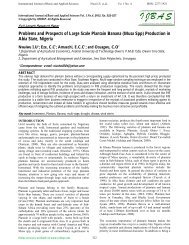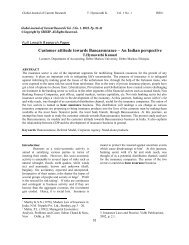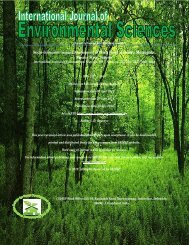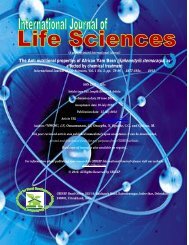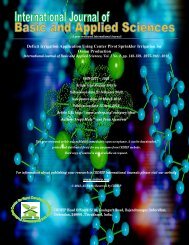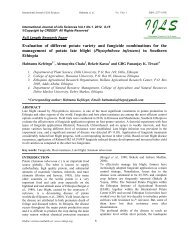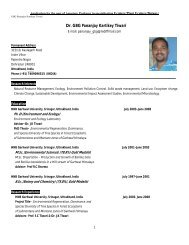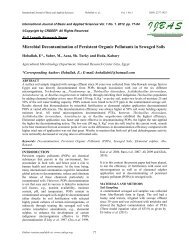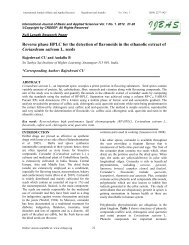Download Pdf - CRDEEP
Download Pdf - CRDEEP
Download Pdf - CRDEEP
You also want an ePaper? Increase the reach of your titles
YUMPU automatically turns print PDFs into web optimized ePapers that Google loves.
International Journal of Basic and Applied Sciences Ikhayere et. .al, Vol. 1 No. 3 ISSN: 2277-1921<br />
Figure 1: FTIR diagram of the polyesteramide resin<br />
Figure 2: Structure of the FTIR for the rubber seed oil<br />
The dry schedule of the polyesteramide resins are as<br />
presented in table.2. The resin has a short set to<br />
touch time but a considerably long dry through time<br />
of 5 hours, the oil is probably a semi drying oil rather<br />
than a none drying or drying oil.<br />
The chemical resistances of polyesteramide resin as<br />
evaluated in different solvent medium are presented<br />
in Table 2. The polyesteramide resin film was found<br />
to resist water, salt and acid medium but poor. The<br />
poor observation when in alkali medium may be due<br />
to the susceptibility of polyesters to<br />
hydrolysis. Adhesion is relatively fair as film former<br />
retain some measurement of tackiness.<br />
Online version available at: www.crdeep.com<br />
265<br />
The FTIR analysis show remarkable changes in the<br />
functional group of the initial starting material, the<br />
rubber seed oil leading to the introduction of the ester<br />
and amide functional groups as seen in the resin<br />
FTIR spectrum in Fig 1<br />
Conclusion<br />
From this study,the renewable rubber seed oil has<br />
been utilized successfully for the synthesis of the<br />
industrial polyesteramide resins. The resins were<br />
successfully characterized by the determination of<br />
physical properties showing good adhesion, hardness<br />
and chemical resistance properties which make them


